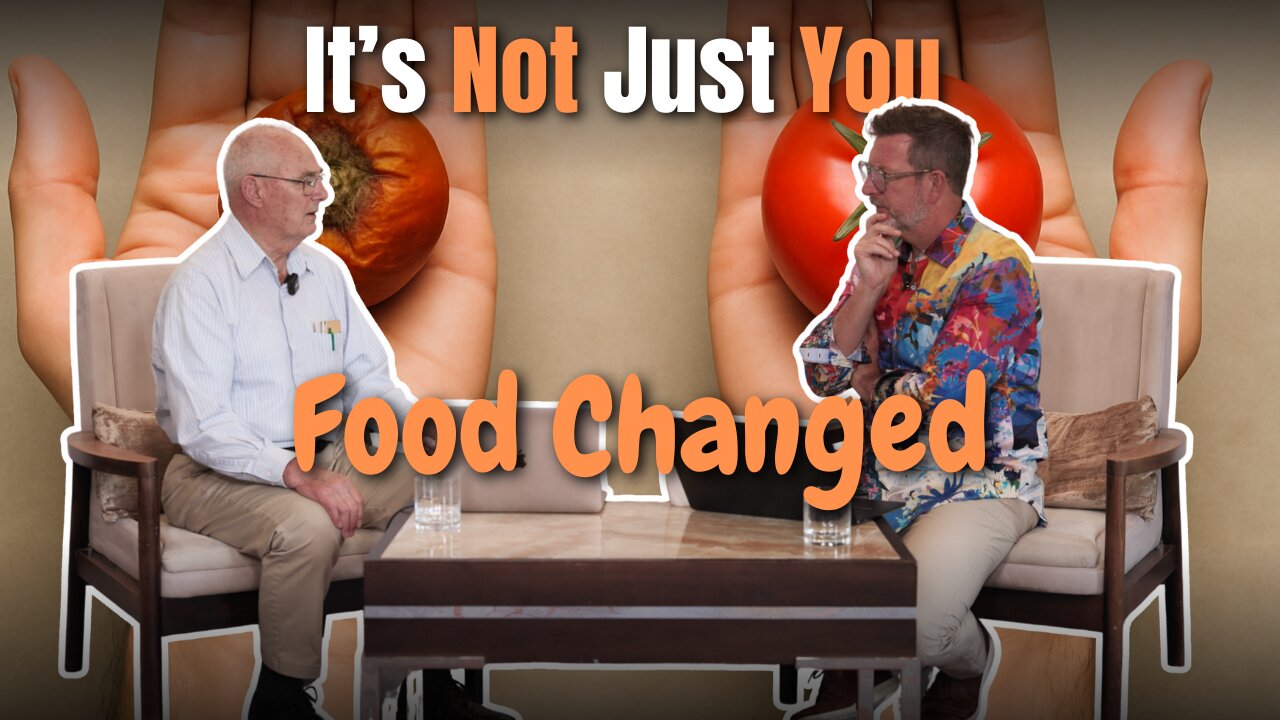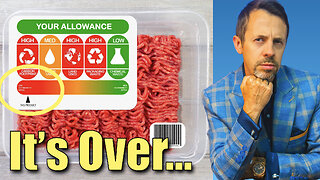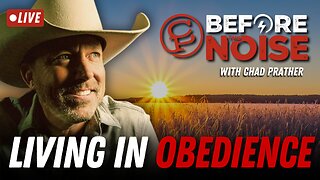Premium Only Content

Your Food Isn’t What It Used To Be—Here’s Why
📬 Join Dr. Goodyear’s Newsletter ➡️ https://pre-scribed.com/subscribe/
Episode Overview
In this powerful conversation, Dr. Nathan Goodyear sits down with Dr. Don M. Huber, Professor Emeritus of Plant Pathology at Purdue University and a pioneering voice on soil health, glyphosate, and agro-ecology. Drawing on five decades of research, Dr. Huber explains how glyphosate functions as both a chelator and an antibiotic, how that impacts nutrient density, plant disease, animal health, and human outcomes—and what practical steps farmers, clinicians, and families can take right now. From re-emerging crop diseases to miscarriages and mitochondrial stress, this episode connects the dots from soil to cell—and offers real-world remediation strategies (including microbial approaches) to help regenerate land and protect health. This isn’t just a conversation—it’s a call to action.
📌 Key Takeaways
Glyphosate is a potent mineral chelator. By binding manganese, zinc, iron, and other cations, it reduces plant nutrient uptake and can lower nutrient density across the food chain.
Antibiotic effects alter the microbiome. Glyphosate can suppress beneficial microbes and favor pathogens in soil, animals, and potentially the food system, shifting ecological balance.
Re-emerging plant diseases are rising. Decades-long field observations link glyphosate exposure with increased severity of fungal and soil-borne diseases in major crops.
Nutrient density has declined. Multi-decade comparisons show lower micronutrients in harvests; Dr. Huber outlines mechanisms and field examples (e.g., pumpkins following Roundup Ready corn).
Small amounts can matter. Field rates discussed suggest even fractional ounces per acre may impair metal transport—context clinicians should consider when evaluating diet-based deficiencies.
Ecology ↔ human health link. The episode explores epidemiologic patterns (e.g., cancer, celiac, autism curves) discussed alongside exposure trends—framed as signals to investigate, not final proofs.
Animal health case studies. Dairy and livestock examples (e.g., chronic botulism patterns) illustrate how feed residues and microbiome disruption may impact performance and loss rates.
Environmental spillovers. Runoff and waterway eutrophication, algal blooms, and filtration bypass are covered as downstream consequences of broad herbicide use.
Regulatory blind spots. The conversation critiques active-ingredient–only assessments and calls for fuller evaluation of adjuvants and formulations.
Microbial remediation is promising. Field trials with Lactobacillus (e.g., raw sauerkraut juice/L. plantarum consortia) showed notable reductions in residual glyphosate and yield rebounds.
Action steps for clinicians and patients. Prioritize nutrient-dense foods, soil-forward sourcing, and mitigation strategies while advocating for transparent oversight.
Heal the land to heal patients. Prevention in oncology begins upstream—support regenerative agriculture as a public-health intervention.
⏱️ Timestamps
0:00 – Episode intro & mission
1:03 – Why healing soil matters for preventing cancer
1:43 – Dr. Don M. Huber: background & career highlights
3:29 – Glyphosate as chelator & antibiotic: the dual mechanism
5:05 – Mineral tie-up: manganese, zinc, iron & nutrient density
8:00 – Microbiome shifts: pathogens vs. beneficials in soil/animals
10:41 – Field observations: re-emerging crop diseases
12:07 – Empty calories problem: 25–75% micronutrient declines discussed
14:06 – Case example: pumpkins after Roundup Ready corn rows
17:00 – Livestock health: miscarriages, deficiencies, and feed quality
18:12 – Sudden Death Syndrome & seed manganese/magnesium note
20:07 – Food safety & exposure patterns: what the data suggest
23:02 – Regulatory conversation: what’s tested—and what isn’t
25:18 – Waterways, eutrophication, and runoff concerns
30:26 – Chronic botulism in dairies: lessons & hypotheses
33:27 – Central America/Sri Lanka case studies: kidney injury & harvest
37:34 – Autism/celiac/IBD curves discussed alongside exposures
40:19 – Practical mitigation on farms (cation “tie-up” workarounds)
41:50 – Microbial remediation: Lactobacillus/sauerkraut juice trials
45:25 – Yield, milk production, and tissue nutrient rebounds
46:12 – Policy outlook: liability shields & constitutional concerns
56:36 – Closing: “heal the land to heal patients”
🔔 Subscribe
🔔 Subscribe for more evidence-based conversations on the future of functional medicine.
▶️ Watch more episodes + full show notes: https://prescribedpodcast.com
🧬 Dr. Don M. Huber’s Research/Info: [Link if available]
📚 Learn more about integrative oncology: https://pre-scribed.com
📞 Schedule a consultation or learn more: https://williamscancerinstitute.com
Clinic & Socials Links
🏥 Visit Dr. Goodyear’s clinic: https://www.drgoodyear.c
-
 LIVE
LIVE
Benny Johnson
1 hour agoIt's All True, The 2024 Election Was Ready To Be Rigged. The REAL Story of How Trump-Elon STOPPED It
4,969 watching -
 LIVE
LIVE
LFA TV
13 hours agoLIVE & BREAKING NEWS! | TUESDAY 11/25/25
3,733 watching -
 1:31:20
1:31:20
Graham Allen
3 hours agoPentagon DROPS HAMMER on Sen. Kelly for Urging Troops to DEFY Orders!! Sedition Exposed!
97.9K476 -
 LIVE
LIVE
Badlands Media
11 hours agoBadlands Daily: November 25, 2025
3,694 watching -
 LIVE
LIVE
Wendy Bell Radio
6 hours agoYou Realize We Voted For This.
6,707 watching -
 26:00
26:00
Neil McCoy-Ward
4 hours agoAnd So It Begins… ('Carbon' Food Quotas Are HERE)
3.21K6 -
 LIVE
LIVE
The Big Mig™
3 hours agoWTF? Letitia James & James Comey Charges Dropped
2,723 watching -
 1:09:24
1:09:24
Chad Prather
17 hours agoWe Must Obey God: The Gospel That Cannot Be Silenced
66.1K26 -
 1:04:27
1:04:27
The Mike Schwartz Show
2 hours agoTHE MIKE SCHWARTZ SHOW with DR. MICHAEL J SCHWARTZ 11-25-2025
2.9K6 -
 4:50
4:50
Captain Peach
6 days ago $7.18 earned5 Ways Game Trailers Lie
52.6K4